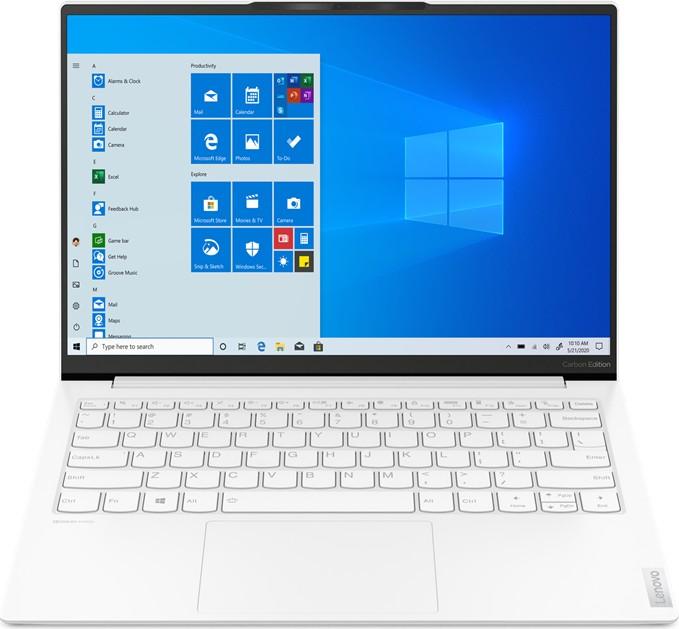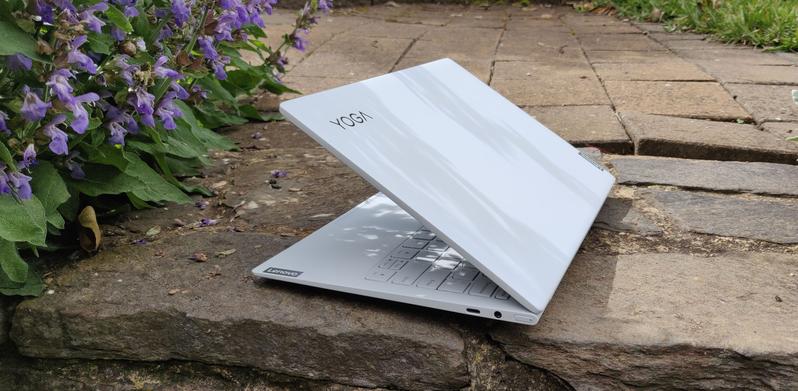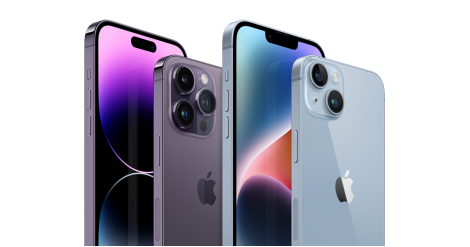Lenovo Yoga Slim 7i Carbon 13″ laptop review — Strength, beauty and flexibility
Lenovo is a leading producer of PC’s, laptops and mobile internet devices and have made a name for itself as one of the most innovative companies in the technology industry.
The Yoga Slim 7i Carbon 13 inch laptop is one of their most recent devices, standing out from many other laptops by virtue of its durability and lightweight design.
To me the Yoga Slim 7i feels halfway between a notebook and a tablet, combining many of the best aspects of both devices. It’s lightweight and portable, wakes instantly, so no long wait to boot up, and at the same time has a large screen and keyboard, the software you’d expect on a laptop and the additional ability to run apps normally found on smartphones and tablets.
The unit itself is very visually appealing – clean lines and a beautiful design aesthetic. There’s a lovely feel to the keyboard, making typing easy and comfortable, the touchpad is very smooth and responsive with no noticeable lag and the unit is manufactured with an anti-fingerprint finish to keep it looking immaculate.
The Yoga Slim 7i is made from a combination of high strength carbon fibre and a magnesium alloy to give the laptop strength while at the same time drastically reducing its weight.
While lovely to type on, I did have a few complaints regarding the keyboard. Due to its size, many keys are given double duty, requiring you to press the function key, and some of their choices as to which functions require the function key were, for me, aggravating. I use the ‘home’ and ‘end’ buttons a great deal but to access them on this keyboard you have to hit the function key and one of the directional arrow keys.
Usually these keys are up next to the delete key, but on this keyboard, this space has been given to the Lenovo smart key button – which will auto-launch a specified application for you –paired with the ‘insert’ function, and screen snip paired with the print screen option.
I can’t speak for all users, but I personally would use ‘home’ and ‘end’ far more often than any of these options, so it’s a bit of a pain to have to hit the function and arrow keys any time I want to use them.
The top row of ‘F’ keys are all dual purpose, but unlike previously, what was the alternate purpose is now the main function. For example, F2 and F3 are the volume up and down keys, but instead of pressing the function key and the F key to get the volume to change, you just press F3. Pressing the function key with the F3 key doesn’t turn the volume up, it brings up the ‘search in page’ tool.
On first use the Yoga Slim 7i takes you through warranty options and offers to install commonly used apps such as Facebook, Dropbox, YouTube, and Alexa for PC. It also provides options to migrate files from a previous laptop and initiates the Lenovo vantage system which is designed to make it simple to run updates and diagnostics, view your system status and manage security settings.
Interestingly, during the setup process the ‘ok’ and ‘cancel’ buttons on the setup prompt screens are swapped around – ‘cancel’ is on the right and ‘ok’ is on the left – this reversal lead to me having to redo a step or two after automatically hitting the button on the right.
The laptop is quite cool during use if you keep it on a solid work surface unless you are actively charging or streaming 4k, but if you have it flat on a non-ventilating surface like a bed then it gets quite hot. Sitting with it on my crossed legs I didn’t notice any heat build up at all – the unit was quite cool, but when I had it flat on my lap sitting on a chair where there was little to no airflow under the unit it heated up fairly quickly.
When the screen is locked but still switched on, the laptop is actively ‘looking’ for you, and will unlock as soon as the correct face is in view. It won’t go to sleep or lock if it has a face in front of it but will lock if there is no face in view.
Lighting can affect the face unlock – you can still get in with a pin if the face unlock is unsuccessful, but if it is struggling to unlock because it can’t recognise you then it can look as though it’s caught in a loop. You have to physically press a key to use the pin unlock option, it won’t automatically go to this option if the face unlock isn’t working. BUT once you have logged in there’s a pop up message allowing you to redo the recognition process in case you got new glasses / did the original face scan in poor light etc and gives you suggestions like improving lighting to make it more successful.

The screen itself is amazing. The colours are vivid and the display is clean and crisp, and it displays 4K resolution pictures flawlessly. The only lack I noticed was in the 4K video display, and this isn’t so much an issue with the screen as with the GPU, I was getting a bit of frame lag when watching videos in 4K because it was struggling to render them fast enough.
The battery life was impressive, lasting at least a day, even when web browsing was a significant part of the usage, and it was quite quick to recharge.
The Yoga Slim 7i has an impressive volume range, the full volume is decently loud but the surprise for me was in the quieter volume levels. Rather than: loud, medium, slightly soft, silent, which has been the case in other devices, the spectrum of quiet volume levels is extensive.The Yoga Slim 7i has Harman-branded speakers optimised with Dolby Atmos® Audio Speaker system certification.
The Yoga Slim 7i has wireless connectivity via high efficiency Wi-Fi 6 and Bluetooth 5.1.In terms of physical connectivity the only option provided by this laptop is USB C, there are 3 USB C ports and a headphone jack only. On the plus side, this means you can plug the laptop in to charge on either side, but I found the lack of other connection options problematic.
Without a ‘regular’ USB port you will need a double ended USB C cable to connect your phone, and while they aren’t hard to get, the laptop doesn’t come with one. You’ll need an adaptor if you want to plug in your standard USB mouse or thumb drive, and since there’s no ethernet port either, you’ll need an adaptor for that too. Surprisingly there’s also no card reader, given that most phones use MicroSD cards for storage these days, including a Micro or even standard SD card reader would seem to have made sense. Mostly these issues can be solved by having a dock, but again, it’s something extra you’ll need to purchase to gain full connectivity.
During the first 30 days of use, the laptop comes with a free trial of McAfee virus protection, unfortunately, it also comes with intermittent pop up adverts from McAfee to persuade you to purchase said software, which I found aggravating.
There are other popups from Lenovo themselves, prompting you to buy an extra warranty or Spotify subscriptions, and some of these feel as though Lenovo isn’t being entirely honest about what they are. One popup stated that ‘Lenovo Welcome’ was expiring soon, that you needed to finish setting up the device. All it ended up being was a sales pitch for warranties and other software purchases and an offer to install common apps.
It feels disingenuous to say ‘don’t miss out’ and ‘expiring soon’ on an alert directly from Lenovo and then use that to try and sell you things. You’d expect that from a web browser popup – not from the manufacturer of the device. I understand that they are trying to create a complete experience for their user, but inbuilt advertising feels like a poor way to achieve this.
This unit came with a 11th Gen Intel(R) Core(TM) i5-1135G7 @ 2.40GHz2.42 GHz processor, 8GB of RAM, a 256GB SSD hard drive and Windows 10 Home. The display is a 13.3″ QHD (2560×1600) Low power WVA 300nits Anti-glare, 100% sRGB, Dolby Vision and the graphics processor is an Integrated Intel Iris Xe.
Looking at the provided specifications on the Lenovo website this specific information can be hard to divine, with listings such as “Storage: Up to 1TB”. There are options for the 7i to have either 8 or 16GB of RAM and either a 256, 512 or a 1TB HDD, but it’s next to impossible to obtain this information from the Lenovo website.
For the full technical specifications visit:https://www.lenovo.com/au/en/laptops/yoga/yoga-slim-series/Yoga-Slim-7i-Carbon-13/p/88YGS701517
I decided to compare the Yoga Slim 7i (released in 2020) to my old Acer Aspire 5830TG (released in 2011), setting aside hardware and screen capabilities and just looking at the physical dimensions.
| Yoga Slim 7i Carbon | Acer Aspire 5830TG |
| 30cm wide | 38cm wide |
| 21cm deep | 26cm deep |
| 1.75cm high (lid closed) | 3.5cm high (lid closed) |
| 963g | 2493g |
| 34cm screen (diagonal measure) | 40cm screen (diagonal measure) |
| Tenkeyless | Full keyboard |
As you can see, the most obvious difference is in the weight, not quite one kilo versus nearly 2.5kg. The overall size is similar, but it’s obvious at a glance which one is going to be easier to carry around with you!
Good vs bad
| Good | Bad |
This is an amazing piece of technology – really nice to use and I enjoyed my time with it. I understand why it’s expensive, a lot of work has gone into it to make it light and fast – it has a great screen and a beautiful aesthetic. That being said, I’m not sure I’d be prepared to spend over $2000 on a laptop (for the 16GB RAM 512GB HDD version) when there are other less expensive – not so light or portable perhaps – options on the market.The RRP on this 8GB RAM 256GB HDD version is $1,799.00, however, it’s worth noting that the price can vary substantially depending on which store you visit – from as low as $1,299.00 all the way to $2,149.00 for the higher spec options, so it pays to shop around.
All devices using only USB C is clearly where physical connectivity is headed, but we aren’t completely there yet, and this unit’s lack of backwards compatibility will be a point of consideration for many. This, along with the price tag, may see the Yoga Slim 7i passed over by many consumers in favour of other products.
The Lenovo Yoga Slim 7i can be purchased from the usual retail stores and directly from the Lenovo website.



